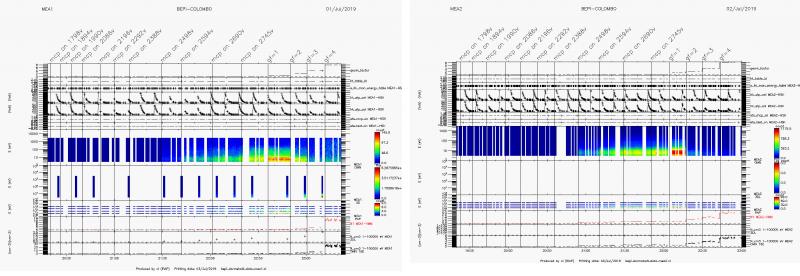First electron spectra in the solar wind for MEA onboard BepiColombo !
The second phase of the commissioning of the two electron analyzers MEA onboard the BepiColombo/Mio spacecraft has been successfully achieved. The two instruments have been turned on on Monday, July 1st and on Tuesday, July 2nd , respectively, under the careful operations of the IRAP scientists and engineers from the European Space Operations Center of the European Space Agency in Darmstadt, Germany. The BepiColombo spacecraft was at a distance of about 28 millions km from the Earth.

The two analyzers, MEA1 and MEA2, have perfectly responded to our commands up to their nominal working point of 2750 Volts applied to their microchannel plates. The very first electron spectra in the solar wind have been obtained, despite the fact that Mio is behind the MOSIF thermal shield.
These first science data validate the excellent performances of the two MEA, while waiting for their full exploitation around Mercury at the end of 2025 as well as for the flybys of the Earth, Venus and Mercury during the cruise phase of BepiColombo.
The MEA Team is very happy to share with the community these first successes and these first data below, together with their japanese colleagues !
IRAP Contact
- Nicolas André, nicolas.andre@irap.omp.eu
- Emmanuel Penou, Alain Barthe, Henry-Claude Séran, Mathieu Petiot






